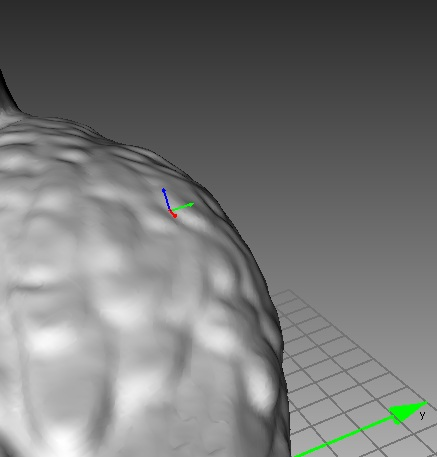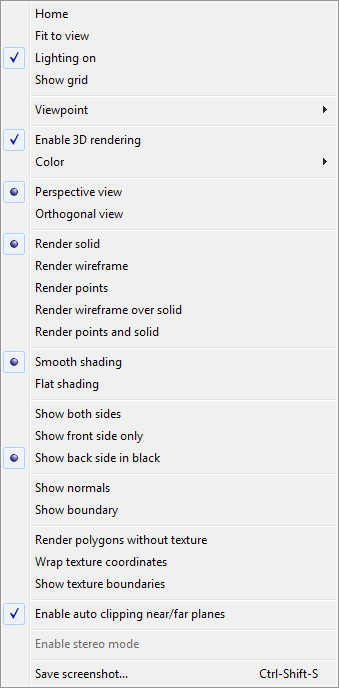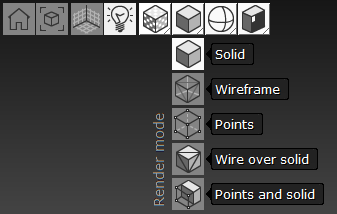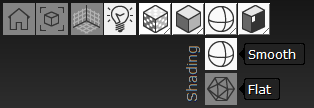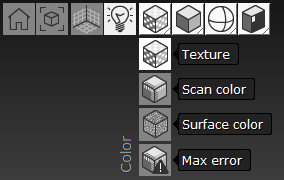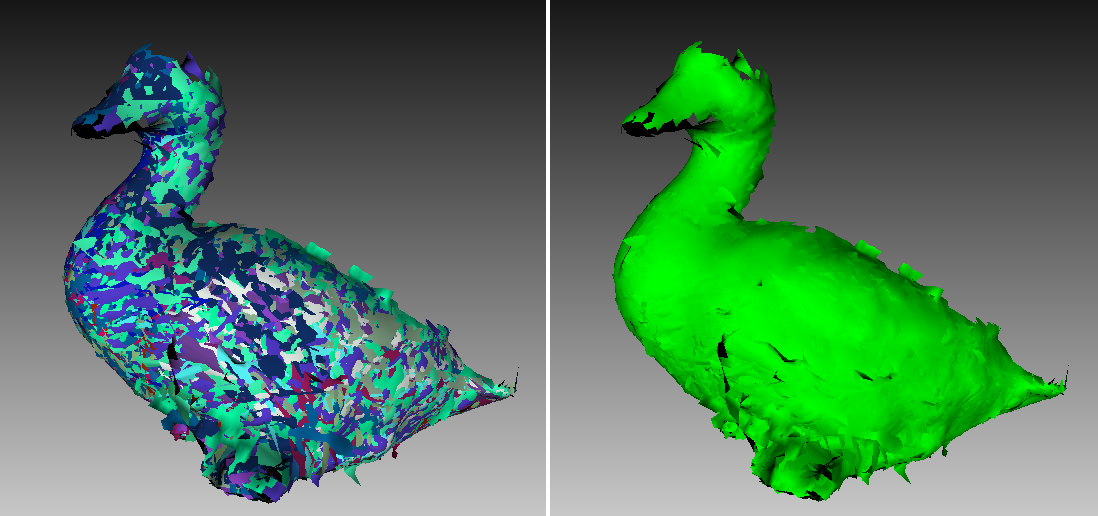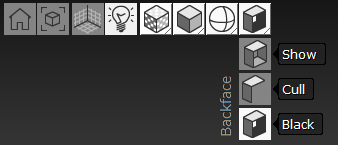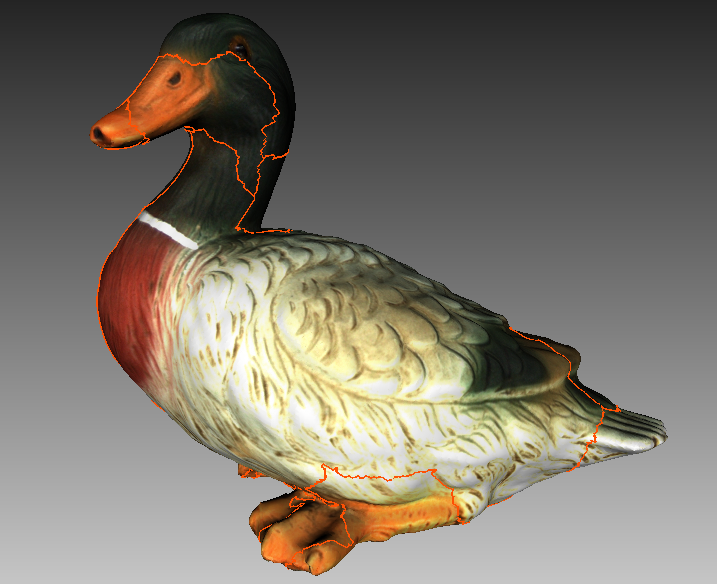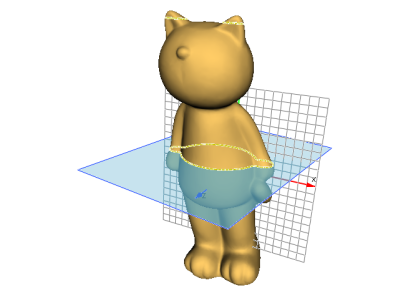Viewing 3D Models¶
Choosing Projections¶
The View menu (see Figure 52.) allows you to choose between perspective and orthogonal projections when displaying the model in the 3D View window.
Perspective projection is the central projection on a plane produced by direct rays that focus on one point: the projection center. This method produces a visual effect similar to human eyesight.
Orthogonal projection is when the projection center resides infinitely far from the plane of projection; in this case, the projection rays are perpendicular to the observation plane. This method preserves parallel lines and is more commonly used for measurement (see Measurement Tools for details).
You can also change projection type in other ways:
- Hit
Ctrl + 5on the main keyboard - Hit
5on the extended numeric keypad (numpad)
Viewpoints¶
To quickly toggle a camera view between several predefined positions, use the View menu or the keyboard combinations listed in Table 4..
| Viewpoint | Keyboard | Extended Numpad |
|---|---|---|
| Front | Ctrl + Shift + 1 |
1 |
| Back | Ctrl + 1 |
Ctrl + 1 |
| Left | Ctrl + Shift + 3 |
3 |
| Right | Ctrl + 3 |
Ctrl + 3 |
| Top | Ctrl + Shift + 7 |
7 |
| Bottom | Ctrl + 7 |
Ctrl + 7 |
Displaying 3D Models¶
The toolbar at the top of the 3D View window features controls for data-display modes. All the commands for viewing and switching between modes are also available in the View menu (see Figure 52.).
The  (Home) button (or View menu option of the same name) restores the view to its original position.
(Home) button (or View menu option of the same name) restores the view to its original position.
The Fit to view command (the  button or Fit to view menu option) automatically fits the object to the 3D View window.
button or Fit to view menu option) automatically fits the object to the 3D View window.
To enable or disable the global coordinate-system axes, select the Show grid option in the View menu, or press the  button on the 3D View panel.
button on the 3D View panel.
Rendering and Shading Modes¶
The View menu allows you to choose one of the following 3D rendering options for scanned frames (see Figure 53.):
- Render solid
- the most common way to render with a solid fill on all faces using your selected shading method
- Render wireframe
- display polygonal-mesh edges without applying a solid fill to the faces
- Render points
- display polygonal-mesh vertices
- Render wireframe over solid
- apply a solid fill to the faces and use a different color to display edges. This method enables you to visually assess the quality of the polygonal model (see Mesh Simplification for details).
- Render points and solid
- automatically display scans in point view, but display models in solid-fill view. This mode eliminates the need to switch to another mode in order to find the best rendering approach for each surface type. It is enabled by default for the Artec Spider scanner.
You can activate any rendering mode from the 3D View toolbar. Click the  button to enable solid-fill mode,
button to enable solid-fill mode,  to display the wireframe model,
to display the wireframe model,  to display a point model,
to display a point model,  to display the wireframe over the solid fill and
to display the wireframe over the solid fill and  to display the point or solid-fill model, depending on the selected surfaces.
to display the point or solid-fill model, depending on the selected surfaces.
For some examples of the various model-rendering modes, see Figure 54..
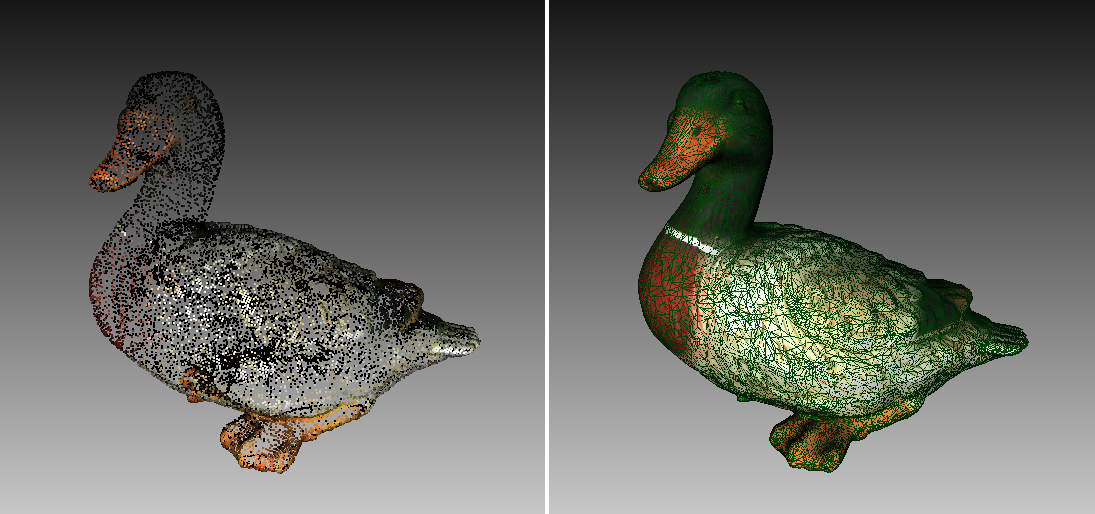
Figure 54. Examples of model using different rendering modes.
Also, you can use the 3D View toolbar (Figure 55.) to choose a shading method for the solid fill (Figure 56.), or select one from the View menu:
Lighting, Color and Texture¶
The Lighting on option in the View menu—or the  button in the toolbar—toggles the lighting in the 3D View window. This option may be useful when you must turn the lighting off to see only the outline of the model or to assess texture quality.
button in the toolbar—toggles the lighting in the 3D View window. This option may be useful when you must turn the lighting off to see only the outline of the model or to assess texture quality.
The Texture option in the View menu selects the method for assigning colors to the captured frames. Artec Studio offers the following methods:
- Texture—displays textured data; otherwise, the software uses the scan’s default color
- Scan color—displays the default color of the scan
- Surface color—displays each frame in a scan using a different color
- Max error—colors the frames in accordance with their registration quality; red indicates a registration error
You can choose among the above-listed options for assigning colors by clicking the corresponding button in the toolbar:  ,
,  ,
,  or
or  , respectively (see Figure 57.). Examples illustrating the different color-assignment options are shown in Figure 58..
, respectively (see Figure 57.). Examples illustrating the different color-assignment options are shown in Figure 58..
Back-Face Rendering¶
Artec Studio offers three methods for rendering a frame’s back face:
- Show
- assigns the back face the same color as the model
- Cull
- the back face is not displayed
- Black
- renders the back face in black
You can choose the mode from the View menu, or click the  ,
,  or
or  button, respectively, in the 3D View window (see Figure 59.). Black is the default mode.
button, respectively, in the 3D View window (see Figure 59.). Black is the default mode.
See Figure 60. for examples that illustrate the different methods of back-face rendering.
Representation of Normals and Boundaries¶
The Show normals option in the View menu enables or disables rendering of normals for each vertex. By default, the normals point away from the model surface and toward the 3D scanner. You can change this direction using the Invert normals command. You can also switch between modes for displaying normals by hitting the N key with the 3D View window active.
When working with edges, the Show boundary feature in the View menu allows you to enable and disable highlighting of the model’s edges. To toggle this feature, hit the B key with the 3D View window active.
Rendering and Texturing Untextured Polygons¶
Textured models may have some untextured areas (for instance, the green area in the middle of Figure 61.). The Render polygons without texture option in the View menu allows you to toggle rendering of such areas.

Figure 61. Texture rendering for Render polygons without texture and Wrap texture coordinates options enabled or disabled.
If the texture of the imported model is smaller than the model itself, Artec Studio can wrap it to fill the untextured areas (see Figure 61. (on right); for details on importing models, consult Importing Models and Scans). The wrapping effect is similar to floor tiling or a repeating wallpaper pattern—that is, the texture repeats periodically. To activate this option, enable the Wrap texture coordinates option in the View menu.
Note
To display untextured polygons, you must activate the Render polygons without texture option as described above; otherwise the wrapping texture will not appear (see Figure 61. on left).
Displaying Boundaries of Texture Atlas¶
Textures applied to 3D models are obviously two-dimensional. You may, however, want to see the boundaries of each texture element on the actual 3D surface. Artec Studio can display a texture-atlas file, such as the the middle image in Figure 122., with its boundaries highlighted (see Figure 62.). Identifying the way in which the boundaries lie on the surface may, for example, help you determine whether you must simplify the model to get better texture application.
To enable boundary display, access the View menu and select Show texture boundaries. To disable this feature, make sure this menu command is unchecked.
Technically, this command also works for textures produced by triangle methods, but it provides no usable information.
Stereo Mode¶
Stereo mode (the Enable stereo mode command in the View menu) is for operations designed to work with stereo displays and stereoscopic-3D-enabled equipment. To enable this mode, your system must support OpenGL Stereo. The Nvidia Quadro family of professional graphics cards is one example of such equipment. When stereo mode is unavailable, the menu option will be grayed out.
For more information on compatible equipment, see the Nvidia website.
Saving Screenshots¶
You can capture surfaces displayed in the 3D View window and save them in a graphics file. Unlike the conventional system Print Screen command, this option saves only the contents of the 3D View window (see Figure 64.) and ignores any background. It also captures the following objects with the surfaces:
- Coordinate axes
- Points, lines and planes
- Annotations
- Surface-distance maps and their histograms (see Measurement Tools)
- Measurement results (points, lines and labels)
To capture a screenshot, follow this procedure:
- Select the Save screenshot... option in the View menu, or hit
Shift+Ctrl+S. - In the dialog, specify the destination folder and file name, then click the Save button. Artec Studio will save the file in
PNGformat.
Note
If you save a screenshot using an existing file name, Artec Studio will overwrite that file without warning. Be sure to specify a unique file name to avoid overwriting other files.
